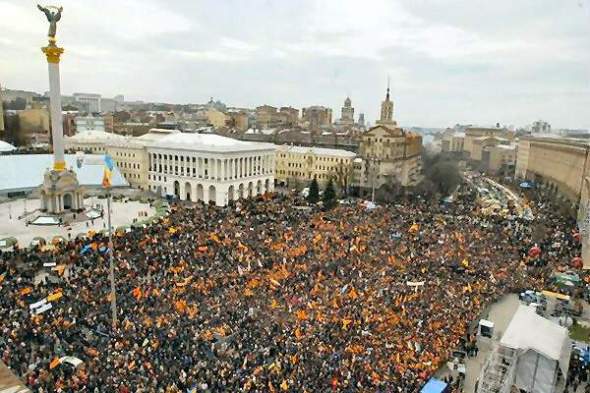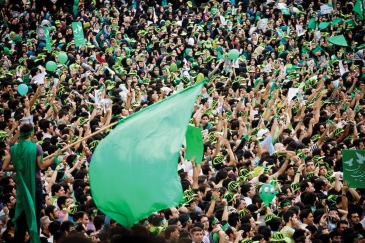
Information Communications Technology (ICT) played a critical role in the Iranian Green Movement, by mobilizing protestors and facilitating communication with the rest of the world. Thanks to websites such as Youtube, Facebook, and Twitter, people across the world bore witness to the murder of Neda as well as many other protestors. This active role of ICT in a major uprising has its roots in the Ukraine and Lebanon.
The Orange Revolution of Ukraine in 2004 and The Cedar Revolution of Lebanon in 2005 are early examples of Internet-organized revolutions. These revolutions were heavily driven by citizen journalism, which involves members of the public actively collecting, reporting, analyzing and disseminating news and information through the internet and social media. Such news was previously limited in scope and depth due to the presence of media filters- news was available through journalists from the foreign press who sometimes risked their lives for their daring coverage of civil unrest.
The Orange Revolution is strikingly similar to the Green Movement of Iran in its cause and its use of ICT. Joshua Goldstein, a graduate research assistant at Harvard’s Berkman Center for Internet & Society, examines in The Role of Digital Networked Technologies in the Ukranian Orange Revolution (2007) how the Internet and SMS technology influenced the outcome of the political process in Ukraine, and in broader terms how these technologies can be utilized to achieve democracy.
In November 2004, hundreds of thousands of Ukrainians took to the streets in peaceful protest of massive presidential electoral fraud. The incumbent authoritarian president Leonid Kuchma’s hand-picked successor Victor Yanukovych won against a widely supported Victor Yushchenko. As Prime Minister in the 1990s, Yuschenko had a strong track record with the public. He developed measures to keep down inflation and stimulate economic growth, while delivering various social services to public servants who neither had been paid nor received pensions.
The roots of the Orange Revolution lie in the murder of Internet-based opposition journalist Georgiy Gongadze. As a radio and television journalist, Gongadze had refused to participate in self censorship and lost his job several times. In April 2000, to circumvent the government’s suppression of freedom of speech, Gongadze co-founded the Ukrainian Pravda (truth), the first popular online news web site in Ukraine. Gongadze mysteriously disappeared in September 2000, and two months later his headless body was found in a shallow grave outside Kyiv. Soon after the body was discovered, Socialist party leader Olexandr Moroz, while speaking on the floor of parliament, accused President Kuchma of orchestrating the murder. The government’s reaction to the Gongadze incident was the first time that many Ukrainians had heard of the Internet.
According to Goldstein, “One of the most fascinating questions about the Orange Revolution is how the Internet became such an influential tool when such a small percentage of the Ukrainian population was online.” In 2004, it is estimated that only between two to four percent of the Ukrainian population of 48 million had access to the Internet.
The Two-Step Flow Theory (1955), developed by sociologists Katz and Lazardsfield, portrays a “two step” information path. The first step is the direct path between mass media and the general public, while the second path is among the elite opinion makers who strongly influence the opinions of the general public. It was found that the citizens with access to online media were very well-connected, allowing an effective flow of information. The Ukrainians online were more active in not only seeking, gathering, and disseminating information than their American counterparts, but also more influential in organizing locally based fund raisers and events.
It is important to note that the Ukrainian legal system at the time viewed the Internet as a peer-to-peer communication tool rather than a mass media platform. While traditional journalists faced the threat of defamation charges, many online journalists were free from this threat. The government had not reached a consensus on how to silence journalists on this new medium. The status quo party was unsophisticated in their use of the Internet, mostly limited to paid supporters who disrupted message boards. Lastly, the Ukrainian youth who greatly comprised the effective online network were generally too young to remember Soviet brutally against the Ukrainians. This probably added to the effectiveness of the Internet as an influential instrument.
The Orange Revolution, named after the color of Yushchenko’s “Our Ukraine” campaign, resulted from the Internet as a means to inform, communicate, and organize, in addition to a combination of other variables, in this case weighing on the side of democracy.
April 14, 2012
Categories: Uncategorized . . Author: vivaictrevolucion . Comments: Leave a comment








